Introduction: Gena Philibert-Ortega is a genealogist and author of the book “From the Family Kitchen.” In this guest blog post, Gena searches through historical newspaper archives and finds old menus—and shows how these provide social history that helps us better understand our ancestors’ times.
When was the last time you ate out? How often did you eat out as a child? While for some of us eating in a restaurant was a rare treat growing up because of where we lived or finances, eating out in today’s world is a more common occurrence. For modern families whose time is overscheduled, sitting down to a meal that mom prepared (with love) can seem like something out of the 1950s. Increasingly we are relying on restaurants to help with our cooking chores. Although it can seem like going out to eat is more of a recent phenomenon, the truth is that our ancestors, depending on circumstance, may have enjoyed a meal out once in a while.
Probably not surprisingly, restaurants originated in France in the 18th century and catered to upper class patrons. Early Americans, typically men, had the opportunity to “eat out” as they traveled and stayed in taverns and inns. One restaurant that opened in the early 19th century and still exists today is the New York institution Delmonico’s, which originally opened in 1827 as a pastry shop. Early customers of Delmonico’s were treated to a vast selection of foods; its 1838 menu was 11 pages in length and included French dishes with their English translations.
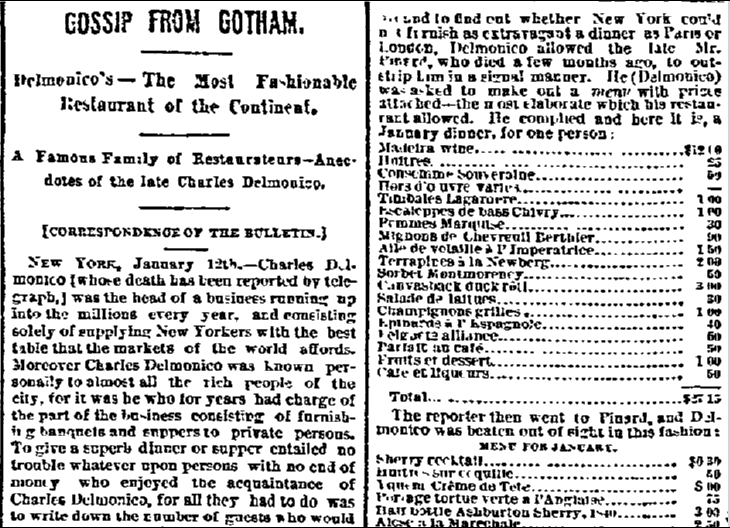
One surprising aspect of researching ancestral food history in newspapers is that your assumptions may be proved wrong. A good example of this can be found in this 1898 newspaper article. It reports on Thanksgiving being served at local Cleveland (Ohio) hotels. Today, some families would never think of going to a restaurant for Thanksgiving, labeling it “untraditional”—and you might assume our ancestors felt that way, too. However, judging from this article it seems that eating Thanksgiving dinner at a restaurant was something many of our ancestors did. This article states that “Hundreds of guests were entertained by the hostelries yesterday, for many Clevelanders preferred to dine down town rather than at their own homes.” The article goes on to provide names of those who dined at those hotels. What a great genealogical find to see the name of an ancestor and where they were eating on Thanksgiving Day.
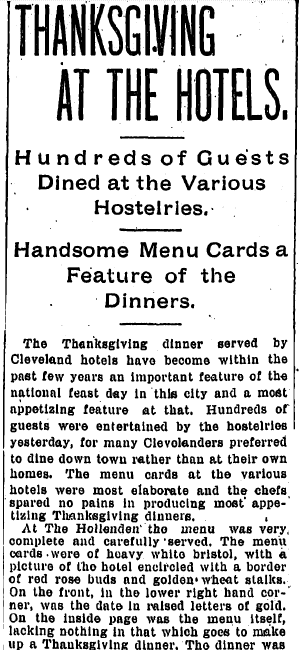
Restaurant menus found in newspapers show the types of food available to your ancestors. In this example of a 1909 Sunday dinner menu from South Dakota, 25 cents buys quite a meal!
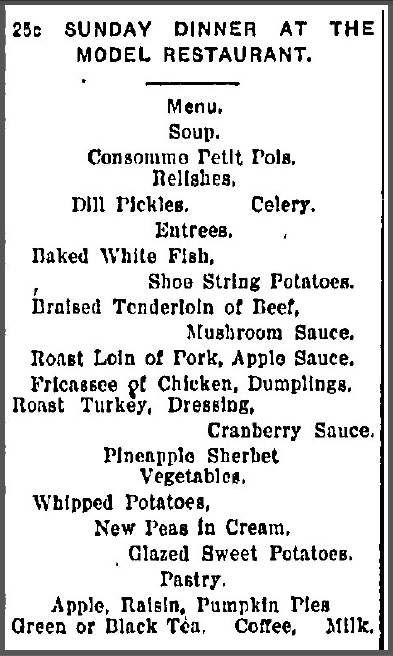
This 1903 Sunday dinner menu from Wichita, Kansas, costs 20 cents and includes dishes such as Irish Stew and Prime Beef.
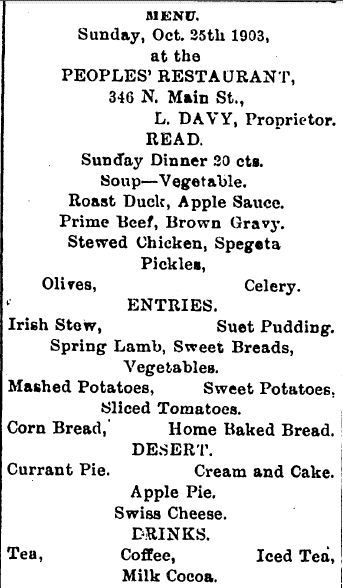
One great aspect of newspaper research is the reminder that fads can and do make comebacks. Case in point: calories printed on menus. Think that the printing of calories is a new idea to get all of us to make healthier food choices? Consider this article about the appearance of calories on menus—in 1918! Makes you wonder why the reporting of calories eventually fell out of favor. My guess is people want to enjoy their meal out without guilt.
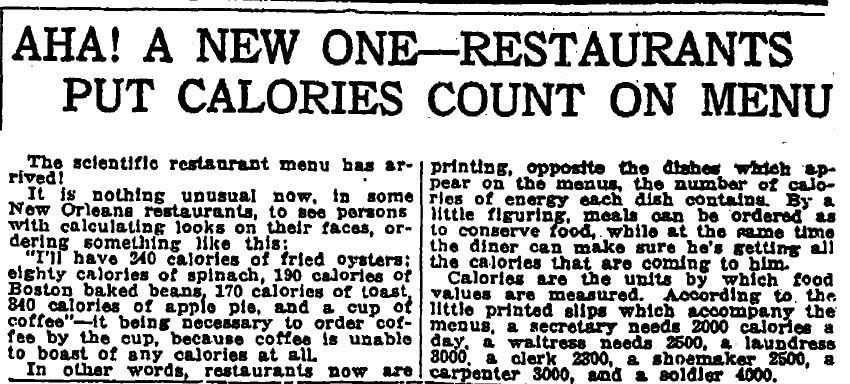
Although today we are familiar with calories and how much is too much, the idea of watching your calories was a new one at the beginning of the 20th century. This article concludes with suggested total amounts of calories needed for different types of people, including laundresses who needed 3000 calories versus a secretary who needed just 2000.
Newspapers provide researchers with rich social history and help us better understand our ancestors’ times. Take an afternoon and peruse the food history printed in the newspaper of your ancestors’ hometown. You just might be surprised at what you find.
